
Security / Automation Sensors using Arduino
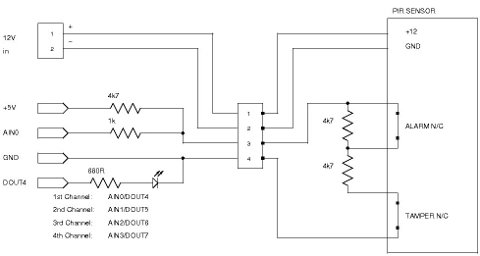
Security system sensors such as motion detectors, reed switches, pressure mats, glass-break detectors, infrared beams, and conductive film can be very useful for various applications, including home automation systems, interactive art installations, and security systems. Almost all security system sensors provide a simple switched output that changes state based on whether the sensor has been activated, functioning like an automatically activated switch. This characteristic facilitates easy connection to an Arduino for status monitoring. Most security sensors offer a normally-closed output; when not activated, their output is a closed circuit, and when activated, it becomes an open circuit. This behavior is opposite to that of a simple push-button switch, which is normally open and closes when pressed. The rationale for closed-circuit outputs is to enable an alarm panel to verify the connection integrity to the sensor. If an intruder cuts the wire connected to a motion detector, the central alarm panel interprets this as the detector being triggered, sounding the alarm even when the detector is removed from the circuit and cannot send a signal back to the panel. This inverted logic can be managed through software. For non-security applications, such as triggering a kinetic sculpture in response to nearby individuals, the sensor can be treated as a simple switch connected to a digital input. However, it is crucial to remember that it will behave contrary to a typical switch. Yet, professionals in alarm installation caution that this simplistic approach is inadequate for security-critical sensors. While having a sensor that triggers the alarm if the wire is cut is beneficial, it is insufficient. For instance, if an intruder accesses the roof, locates the motion detector wires, strips the insulation, and short-circuits them, the alarm panel will still perceive the sensor circuit as intact, allowing the intruder to navigate within the premises undetected. Additionally, if someone enters beneath a motion detector without triggering it and removes its cover, or if an individual is present when the security system is disarmed and takes the opportunity to tamper with a motion detector, the system remains vulnerable. To safeguard against such attacks, a security system must be capable of detecting more than just an open or closed circuit. It should identify wire cuts, short circuits, and sensor activation, as well as detect tampering, even when the alarm system is disarmed. Well-designed security systems treat all components as untrusted and can identify tampering in any cable or sensor at any time. This project will utilize the flexibility of the Arduino's analog inputs to construct sensor circuits that are as comprehensive as any professional system, enabling automatic detection of potential failures, tampering, or trigger conditions. The Arduino can then function as a security system controller or as part of a home automation system to manage lighting or control an art installation based on viewer interactions.
Security system sensors are integral components in various applications, providing essential functionality in detecting unauthorized access or changes in the environment. The sensors mentioned, including motion detectors, reed switches, pressure mats, glass-break detectors, infrared beams, and conductive film, can be interconnected to form a robust security network. Each sensor type has unique characteristics and applications, making them suitable for different scenarios.
The use of normally-closed outputs in security sensors enhances the reliability of the system. This configuration ensures that any disruption in the circuit, such as wire cuts or short circuits, is immediately detected by the alarm panel, which is critical for maintaining security integrity. The ability to detect tampering, even when the system is disarmed, is a significant advancement in security technology. It allows for continuous monitoring of sensor integrity, ensuring that any unauthorized access attempts can be addressed promptly.
By leveraging the capabilities of the Arduino platform, complex sensor circuits can be designed to monitor multiple conditions simultaneously. The analog inputs of the Arduino can be utilized to create sophisticated detection algorithms that assess the status of each sensor and identify any anomalies in real-time. This versatility enables the development of customized security solutions tailored to specific needs, whether for residential or commercial applications.
Furthermore, the integration of these sensors into a home automation system can enhance user experience by providing automated responses to environmental changes. For instance, lights can be programmed to turn on when motion is detected, or interactive art installations can respond dynamically to viewer presence. This dual functionality not only improves security but also enriches the overall environment, making it more responsive and engaging.
In conclusion, the implementation of advanced security sensors and the use of platforms like Arduino can significantly enhance the effectiveness of security systems. By ensuring comprehensive monitoring and detection capabilities, these systems can provide a higher level of protection against various intrusion methods while also enabling innovative applications in home automation and interactive installations.Security system sensors such as motion detectors, reed switches, pressure mats, glass-break detectors, infra-red beams, and conductive film can be very handy for all sorts of things including home automation systems, interactive art installations and sometimes even security systems! Almost all security system sensors provide a simple switched output that changes state based on whether the sensor has been tripped or not, which means that when connected up in a circuit they behave just like a switch that is activated automatically. That makes them extremely easy to connect to an Arduino to read their status. Most security sensors provide a normally-closed output: that is, when they have not been tripped their output is a closed circuit, and when it has been tripped it goes open-circuit.
This is the exact opposite behaviour of something like a simple push-button switch, which is normally open-circuit and then goes closed-circuit when you press it. The reasoning behind closed-circuit outputs is that it allows an alarm panel to verify the integrity of the connection to the sensor.
If an intruder cuts the wire going to a motion detector the central alarm panel will see that as the same thing as the detector being triggered, and will sound the alarm even though the detector itself has been totally removed from the circuit and can`t send back a signal to the panel. That inverted logic is easily handled in software. If you want to use a security sensor for a non-security application such as triggering a kinetic sculpture when people walk up to it then you can treat a sensor as a simple switch and connect it to a digital input.
Just remember that it will behave in the opposite way to a normal switch and you`ll be all set. However, any professional alarm installer will tell you that such a simple approach is totally inadequate for sensors that are security-critical. Having a sensor that will trigger the alarm if the wire is cut is a good start, but it doesn`t go nearly far enough.
What happens if an intruder climbs in through the roof, finds your motion detector wires inside the ceiling, strips back the insulation, and short-circuits them It doesn`t matter what the sensor does then because the alarm panel will think the sensor circuit is good. The intruder can walk around inside your house with the alarm fully activated and it won`t even notice.
Or what happens if someone gets underneath a motion detector without triggering it, such as by coming in through a doorway underneath it, and then removes its cover to mess with it Or even more insidiously, what if someone was in your premises when the security system was disarmed (such as a customer in a store during regular opening hours) and took the opportunity to take the cover off a motion detector and bypass it so they could return later when the store is closed and the security system has been armed To guard against those sorts of attacks a security system needs to detect far more than a simple open or closed circuit. It needs to be able to detect if the wire to a sensor has been cut, or a wire short-circuited, or the sensor has been tripped.
It also needs to detect if the sensor is being tampered with, even when the alarm system itself is in a disarmed state. Well-designed security systems treat all parts of the system as untrusted and can detect tampering in nearly any cable or sensor at any time, whether it is currently armed or disarmed.
In this project we`ll use the flexibility of the Arduino`s analog inputs to build sensor circuits that are as fully-featured as any professional system and will allow you to detect any of those possible failure, tamper, or trigger conditions automatically. You can then use your Arduino as a security system controller, or as part of a home automation system to turn lights on and off as you enter and leave rooms, or to control an art installation based on viewer activity.
🔗 External reference
Security system sensors are integral components in various applications, providing essential functionality in detecting unauthorized access or changes in the environment. The sensors mentioned, including motion detectors, reed switches, pressure mats, glass-break detectors, infrared beams, and conductive film, can be interconnected to form a robust security network. Each sensor type has unique characteristics and applications, making them suitable for different scenarios.
The use of normally-closed outputs in security sensors enhances the reliability of the system. This configuration ensures that any disruption in the circuit, such as wire cuts or short circuits, is immediately detected by the alarm panel, which is critical for maintaining security integrity. The ability to detect tampering, even when the system is disarmed, is a significant advancement in security technology. It allows for continuous monitoring of sensor integrity, ensuring that any unauthorized access attempts can be addressed promptly.
By leveraging the capabilities of the Arduino platform, complex sensor circuits can be designed to monitor multiple conditions simultaneously. The analog inputs of the Arduino can be utilized to create sophisticated detection algorithms that assess the status of each sensor and identify any anomalies in real-time. This versatility enables the development of customized security solutions tailored to specific needs, whether for residential or commercial applications.
Furthermore, the integration of these sensors into a home automation system can enhance user experience by providing automated responses to environmental changes. For instance, lights can be programmed to turn on when motion is detected, or interactive art installations can respond dynamically to viewer presence. This dual functionality not only improves security but also enriches the overall environment, making it more responsive and engaging.
In conclusion, the implementation of advanced security sensors and the use of platforms like Arduino can significantly enhance the effectiveness of security systems. By ensuring comprehensive monitoring and detection capabilities, these systems can provide a higher level of protection against various intrusion methods while also enabling innovative applications in home automation and interactive installations.Security system sensors such as motion detectors, reed switches, pressure mats, glass-break detectors, infra-red beams, and conductive film can be very handy for all sorts of things including home automation systems, interactive art installations and sometimes even security systems! Almost all security system sensors provide a simple switched output that changes state based on whether the sensor has been tripped or not, which means that when connected up in a circuit they behave just like a switch that is activated automatically. That makes them extremely easy to connect to an Arduino to read their status. Most security sensors provide a normally-closed output: that is, when they have not been tripped their output is a closed circuit, and when it has been tripped it goes open-circuit.
This is the exact opposite behaviour of something like a simple push-button switch, which is normally open-circuit and then goes closed-circuit when you press it. The reasoning behind closed-circuit outputs is that it allows an alarm panel to verify the integrity of the connection to the sensor.
If an intruder cuts the wire going to a motion detector the central alarm panel will see that as the same thing as the detector being triggered, and will sound the alarm even though the detector itself has been totally removed from the circuit and can`t send back a signal to the panel. That inverted logic is easily handled in software. If you want to use a security sensor for a non-security application such as triggering a kinetic sculpture when people walk up to it then you can treat a sensor as a simple switch and connect it to a digital input.
Just remember that it will behave in the opposite way to a normal switch and you`ll be all set. However, any professional alarm installer will tell you that such a simple approach is totally inadequate for sensors that are security-critical. Having a sensor that will trigger the alarm if the wire is cut is a good start, but it doesn`t go nearly far enough.
What happens if an intruder climbs in through the roof, finds your motion detector wires inside the ceiling, strips back the insulation, and short-circuits them It doesn`t matter what the sensor does then because the alarm panel will think the sensor circuit is good. The intruder can walk around inside your house with the alarm fully activated and it won`t even notice.
Or what happens if someone gets underneath a motion detector without triggering it, such as by coming in through a doorway underneath it, and then removes its cover to mess with it Or even more insidiously, what if someone was in your premises when the security system was disarmed (such as a customer in a store during regular opening hours) and took the opportunity to take the cover off a motion detector and bypass it so they could return later when the store is closed and the security system has been armed To guard against those sorts of attacks a security system needs to detect far more than a simple open or closed circuit. It needs to be able to detect if the wire to a sensor has been cut, or a wire short-circuited, or the sensor has been tripped.
It also needs to detect if the sensor is being tampered with, even when the alarm system itself is in a disarmed state. Well-designed security systems treat all parts of the system as untrusted and can detect tampering in nearly any cable or sensor at any time, whether it is currently armed or disarmed.
In this project we`ll use the flexibility of the Arduino`s analog inputs to build sensor circuits that are as fully-featured as any professional system and will allow you to detect any of those possible failure, tamper, or trigger conditions automatically. You can then use your Arduino as a security system controller, or as part of a home automation system to turn lights on and off as you enter and leave rooms, or to control an art installation based on viewer activity.
🔗 External reference
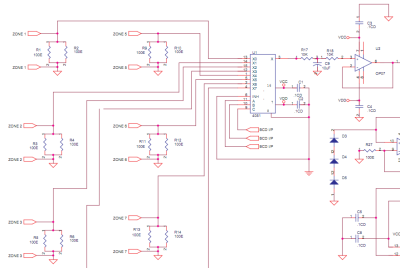
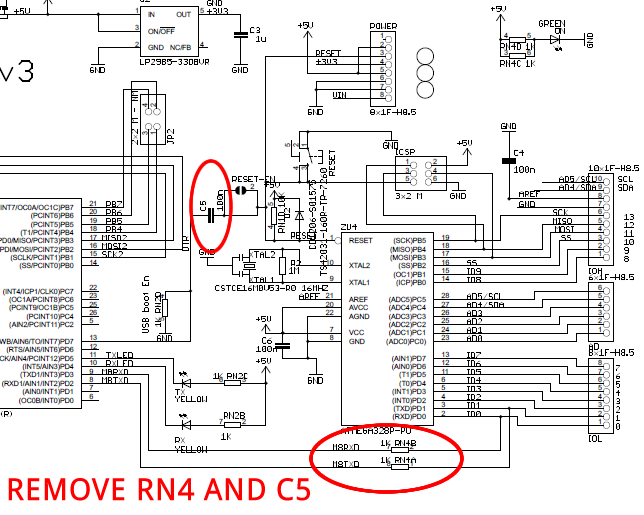

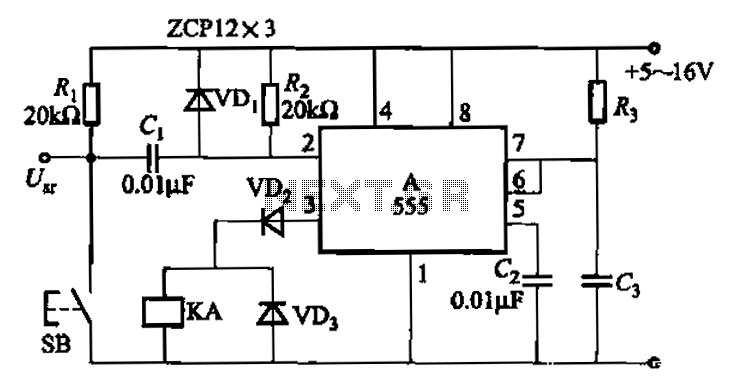
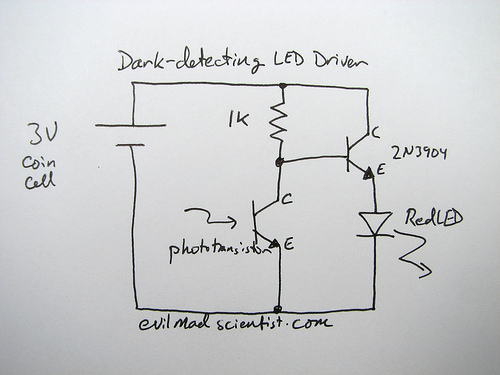
.jpg)